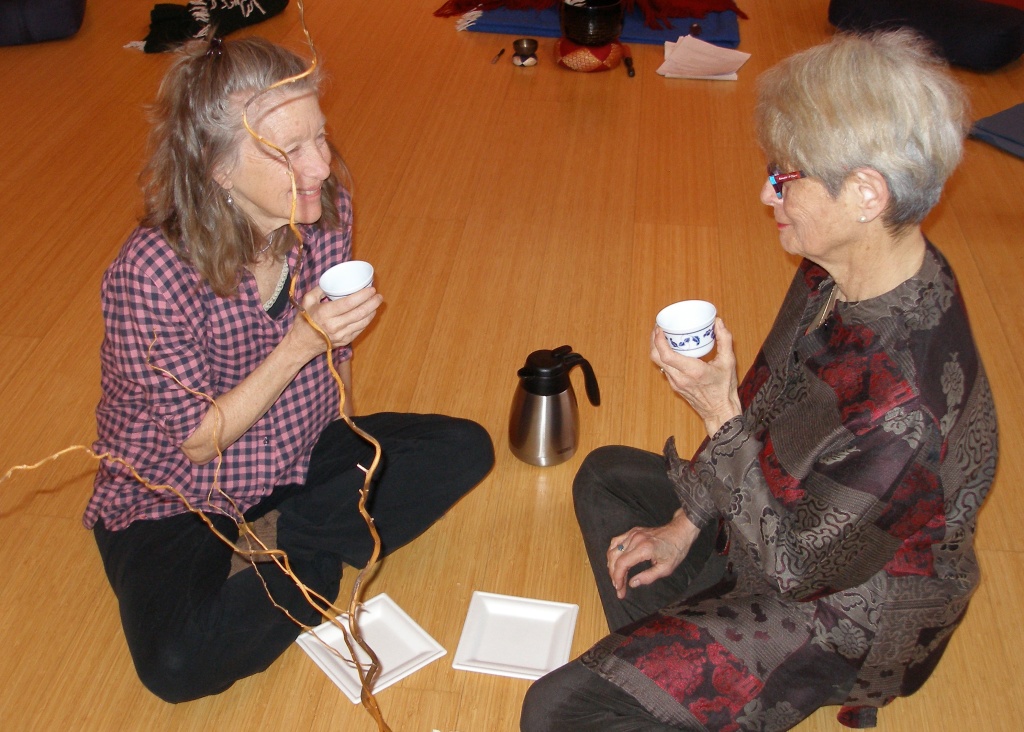
The new tea and dialogue practice I have been working on might be considered a form of servant leadership, a style of leadership that is primarily focused “on the growth and well-being of people.”
The respectful sharing of tea and honest open dialogue is aligned with what Lowder (2009) found in reviewing the literature on servant leadership including: mutual power, collaborative participation, non-judgment, a focus on believing in and empowering people, providing opportunities to learn, and valuing differences. Two particularly notable aspects were “openness to spiritual, emotional, and mental inspiration and revelation” (p. 12), and a focus on “overcoming… fear through creating shared meaning” (p. 13).
I find that holding nurturing safe space for authentic relating makes “aha” moments more possible. Marshall (2016) notes that an intention to improve wellbeing may not lead to action until it is supported by a strong emotional connection, “The aha moment is essentially the sweet spot where the emotional brain and rational brain finally integrate” (Marshall, 2016, p. 65).
Edwards, Elliot, Iszatt-White and Schedlitzki (2015) discuss the potential use of creative techniques like tea & dialogue to support the integration of cognition and emotion that is accessed through the body (Nummenmaa & Glerean & Hari & Hietanen, 2014): “leadership cannot be reduced to an entirely rational process, there has been an increasing interest in emotional and social intelligence in the leadership literature…with arts-based methods and other creative techniques gaining ground…It is argued that these approaches have the potential to connect cognitive and emotional processes” (p. 2).
Fry & Krieger (2009) describe servant leadership, which they rank highly in their model of being-centered leadership as follows: “Servant leadership consists of helping others discover their inner spirit, earning and keeping the trust of others, valuing service over self-interest, and role modeling effective listening…The most effective leadership in this view is not provided by those who seek leadership roles but rather by those who have a compelling vision and desire to serve others first” (Fry & Krieger, 2009, p. 1682).
The embodied awareness of tea & dialogue is particularly useful for leadership that works through supportive relationships. Brendel and Bennett (2016) speak of the benefits of “a practical model of embodied leadership where individuals learn ways to deepen awareness to include both the mind and the body as an interdependent system” (p. 409). They concluded embodied and aware leadership “builds resilience and resourcefulness, and improves relationships in complex environments” (Brendel & Bennett, 2016, p. 409).
References:
Brendel, W. & Bennett, C. (2016). Learning to embody leadership through mindfulness and somatics practice. Advances in Developing Human Resources, 18(3), 409-425. Doi: 10.1177/1523422316646068
Edwards, G., & Elliott, C., & Iszatt-White, M. & Schedlitzki, D. (2015). Using creative techniques in leadership learning and development: An introduction. Advances in Developing Human Resources. 17(3) 279-288, Doi: 10.1177/1523422315586616
Fry, L., & Krieger, M. (2009). Towards a theory of being-centered leadership: Multiple levels of being as context for effective leadership. Human Relations, 62(11), 1667-1696. Doi: 10.1177/0018726709346380
Lowder, T. (2009, June). Best leadership model for organizational change management: Transformational verses servant leadership.
Nummenmaa, L., & Glerean, E., & Hari, R. & Hietanen, J. (2014). Bodily maps of emotion. Proceedings of the National Academy of Sciences of the United States of America.
Marshall, L. (2016, December). The power of the aha! moment. Prevention, p. 62.
